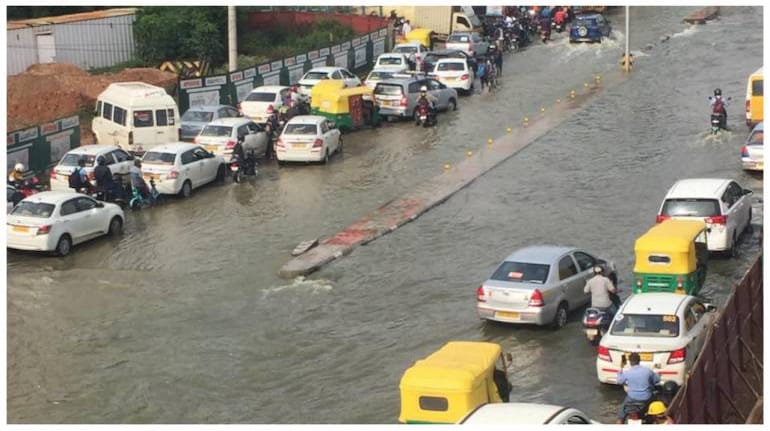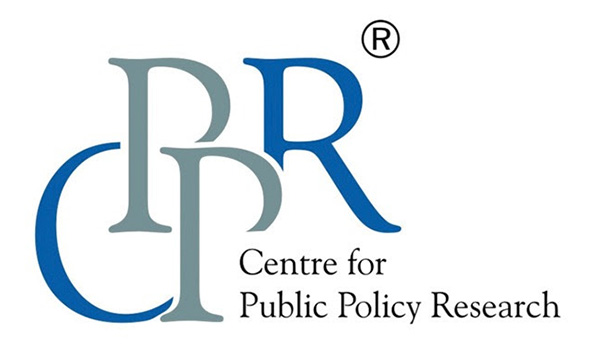Articles

Women in Factories : A Legal Perspective
September 14, 2022
CPPR Webinar: Women in Factories – A Legal Perspective
September 16, 2022Floods will continue to inundate India’s unplanned city development

The recent floods in Bengaluru was a result of an unplanned infrastructure, developed by flouting the laws in city governance, and by disregarding the building capacity to tackle the challenges of urbanisation.
In recent years, the paucity in programming and the lack of planning and preparation have resulted in floods in many Indian cities. Haphazard and non-inclusive developmental works that do not reflect the fundamental needs and realities of the cities have often led to unintended consequences such as waterlogging, and floods.
Most of the time, a town or city’s historic and geographic facets are neglected, as they are not part of the ‘modernisation’ plans, and have often resulted in imposed ideas and borrowed concepts.
It is easy to point fingers and transfer the burden when a calamity has occurred, but the real question to be asked is: who should be held accountable for this?
Even though the 74th amendment has been a celebrated piece of legislation, its implementation remains patchy on the ground. Though being a much-debated topic in the Indian context, there have not been any significant improvements in the transfer of power to the local governments.
The local governments are necessarily the immediate point of contact in the neighbourhood, and the agents of last-mile deliveries of the government functions. But an inverted power structure has to be dealt with while planning and development, as they often come from the state or Union governments without taking into cognisance what is required at the local level.
Over and above, many of these cities do not have a functional council and, most of the time, the elections to the municipal corporations are either delayed or indefinitely postponed. This results in the lack of continuity and imagination at the local level in developing strategic plans to build a sustainable city. The administrative rule, instead of a democratically-elected and empowered local government, in a city like Bengaluru, is a prime example of the weightage given to the local government.
The lack of street designs and mapping is anathema to road development and city planning. A good street design features footpaths, carriageways, stormwater drains, pedestrian crossing, street furniture, and street vending. Among them, the stormwater drainage is a key element, and it remains missing in most Indian cities. Inapt designs of stormwater drains cause major longitudinal stormwater flows, followed by inundation within a few hours.
In some cases, drains are installed haphazardly, and are not on level with the surrounding road surface which, worsens the situation. Furthermore, the lack of updating, poor engineering conventions, and mismatched technological skills with the public work departments have caused immense damage to streets, and even neighbourhoods. It is because principally the authorities focus on road widening over street design maps.
When an area is converted from a field into a built-up land, it loses its ability to absorb rainfall. Initially, water body protection was not the primary focus of urban planning; it was given its due attention only following frequent flooding in large cities which in turn led to massive financial losses. The imbalance between the city’s infrastructure and the rate of development contributes to challenges such as inadequate drainage system, waterlogging, encroachment of water bodies, Climate Change, and more. Many cities are being built up in low-lying areas, usually as encroachments over lakes, wetlands, and riverbeds. Many have not adopted disaster management plans, and buildings with a resilience capacity. Both situations will lead to the inefficient use of the land and resources, and often incentivise illegal constructions, which will check the free flow of rainwater, and canals.
One of the central problems here is the inefficiency of administration in most of the urban local bodies. Several independent, overlapping organisations provide public goods and services. A governance system with multiple agencies aims to promote ‘creative dissent’ to reduce co-ordination issues and improve outcomes, such as effective delivery of products and services. However, the existence of such multiple agencies has failed to co-operate in areas where they are expected to. The vertical growth and the high density is often challenged by the poor capabilities of the parastatal agencies. Even the spread of the city is often affected by the poor managerial capacities of these agencies.
The importance of developing a master plan has also been neglected in most Indian cities. The city of Bengaluru hasn’t had a master plan since 2015, but the most intriguing aspect is that the city has never had a master plan scheme created in the first place. Following an outdated master plan in a rapidly urbanising metropolitan city like Bengaluru, contributes to the dysfunctioning and mismanagement of the city’s resources.
Despite different cities having distinct topographies and climates, the causes of floods are just about the same, and are heavily influenced by where the cities are developed or extended, and in the methods employed to create roads, buildings, and other structures. Relying on the age-old plans ought to be shelved as they lead to further complexities in the sustenance of the city. Additionally, ensuring proper utilisation of satellite technologies when approving the areas for development; building stormwater drainage systems, and; creating land use maps will help curb these urban challenges to an extent.
This was first published in ‘Moneycontrol.com.’ Read it here...
Views expressed by the author are personal and need not reflect or represent the views of the Centre for Public Policy Research.



